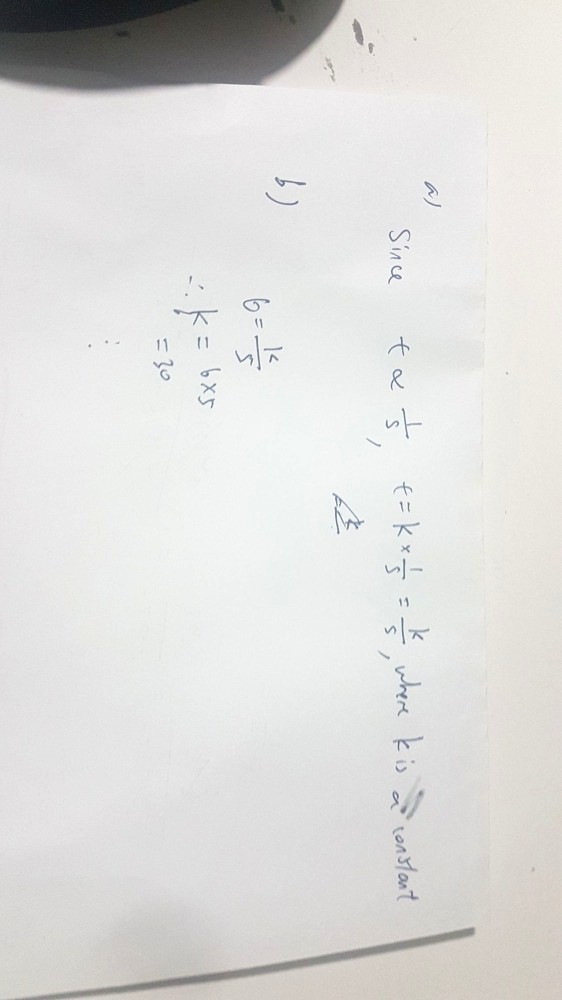Abel's answer to chloe's Secondary 2 Maths Singapore question.
done
{{ upvoteCount }} Upvotes
clear
{{ downvoteCount * -1 }} Downvotes
Since t is inversely proportional to s, an increase in t would result in a CONSTANT decrease in s, and vice versa. Since its a constant decrease/increase, it can be represented as such in the working shown.
The same can be applied should t be proportional to s, but do note that in this case an increase in either will lead to a constant increase in the other
The same can be applied should t be proportional to s, but do note that in this case an increase in either will lead to a constant increase in the other
Date Posted:
5 years ago


